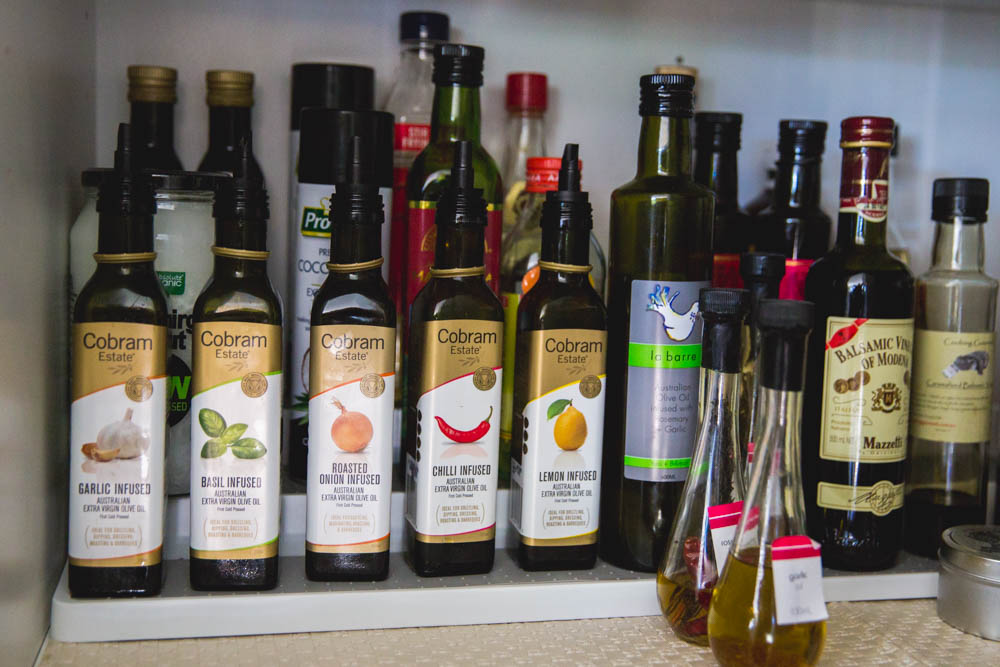A reader asked over on my Facebook Group “What are your tips for an organised pantry? Mine NEVER seems to stay sorted”.
I’m sure you can guess that the first tip I’m going to give on maintaining a clean pantry is to declutter it of all things out of date and anything you know you won’t eat. I would then recommend looking at how to store the products in a way that supports your home. I’ve written a few blogs on this already so take a read of those first:
10 Tips Away from an Organised Kitchen
7 Hacks on How to Organise a Pantry – Particularly Small Ones
If you’ve done all of this, and it’s still out of control or difficult to maintain it, then I’ve got a few more tips for an organised pantry. Firstly, always set up the pantry to suit the person that does the majority of the food preparation and cooking. From there:
Review it regularly
Take some time to review the pantry after you have organised it. Perhaps one week later, and then after you’ve done a grocery shop. What’s going on? Is it working? Are things going back to where they belong? If not, are there labels on the containers or the shelves where things have gotten messy? Are the messy spots because a child (or short adult) can’t reach it well enough? Are the messy spots awkward to get to? If so, could a basket help get into this spot? Any time we organise a zone in our house, it’s important to review it and do a few tweaks.
For example, I did a pantry the other day for a family. I set it up based on what they already had set up, and made a few changes based on a conversation we’d had. When I returned a week later, they’d done grocery shopping and items were placed in different zones from what I had created. So, I moved the labels (and any relevant items), to the spot that these items were naturally put by the family. When I checked in later, the pantry was staying tidy.
It’s important to observe how the space is used and make adjustments to suit the needs of the users. A typical example is to store kids’ food and snacks at a height they can access. It’s more likely to stay tidy if they can get their hands on it.
Tidy it up each time you do the groceries
If you get into the routine of giving it a quick tidy every time you do the groceries, it’s less likely to get out of control. Doing this routinely will allow you to see if there is a common theme of things going in the wrong spot (and may pinpoint the culprit who needs a reminder of the system).
It allows you to be aware of what might have been sitting in there without being used, and it also reminds you of what’s in there, so you’re not overbuying items. I do this with my fridge too. This is a great way to rid yourself of those science experiments that end up in the back of a fridge!

Use containers that fit what you buy
When setting up your pantry, you might repurpose containers you already have. That is awesome and can get things organised but just consider the amount of the food that needs to be stored. Don’t be fooled by what’s left in the packet. For example, you find half a 1kg bag of flour in the pantry, it’s tempting to get a container that will fit what is left but be sure to choose a container to fit a full 1kg bag (or the size you usually purchase). Think about the size packet you usually buy so you can make the right choice for your pantry.
It can be good to use a slightly bigger container so you don’t have to wait for the container to be empty before you can refill it. This saves having the flour container and a 1kg bag of flour in the cupboard because your container will overflow if you tip the new bag in.
Reviewing this will also make it clear if you’ve chosen the right sized container. You may need to invest in new containers, or choose to downsize your packet purchase to a smaller size.
Have a home for ingredients going out of date
It can be good to dedicate a part of your pantry for items that are about to expire. This gives you the opportunity to make meals from the ingredients before they go off (without having to remember what the soon-to-be out-of-date items were). It also makes it a little easier to cull the pantry. It can be a fun way to do a cooking challenge. On MasterChef they used to do a ‘Mystery Box’ challenge. Consider this your ‘Mystery Box’ spot – the ingredients you need to try and use up.
Specialty boxes for things you make all the time?
You might make smoothies every day and use the same four items from the pantry daily. Group them together in a container and label it ‘Smoothies’. This means you only have to take out one container, and not locate the ingredients from four different places in the pantry.
You’d only do this for something you make regularly. Things I’ve seen are ‘smoothies’, ‘baking’, ‘taco ingredients’. Otherwise storing like with like is recommended.

Groups of things
Much like the specialty box suggestion above, grouping snacks together is another great idea for an organised pantry. Some examples are ‘Kids Snacks’, ‘Adult Snacks’, ‘Treats’, ‘Sweet Treats’, ‘Savoury Snacks’. If you buy a lot of muesli bars, chips, Roll-Ups and other snack packets, grouping them in baskets or large containers can make them easy to store and easy for everyone to find. This is one of the common areas that ends up creating mess, so this suggestion might help.
Another suggestion is to group sauces into containers. This can help get them in and out too. The style of cooking, and the types of cuisines you might cook will alter what you put together. Some examples would be ‘Asian Sauces’, ‘Curries’, ‘European Herbs and Spices’, ‘Vinegars’, ‘Oils’, just to name a few.
Store things in the prime real estate
Things that are used often should be stored in the eye to waist height range. Consider this zone your ‘prime real estate’. Things used less often go at the bottom or top. Remember eye to waist height is different for kids and adults, so if you have kids that you’re happy to have fetch a snack on their own, make sure it’s at a height that suits them.
All of these tips help you maintain and manage your pantry. Do you have others? Why not jump onto the Facebook Group and share your secrets to maintaining an organised pantry?







